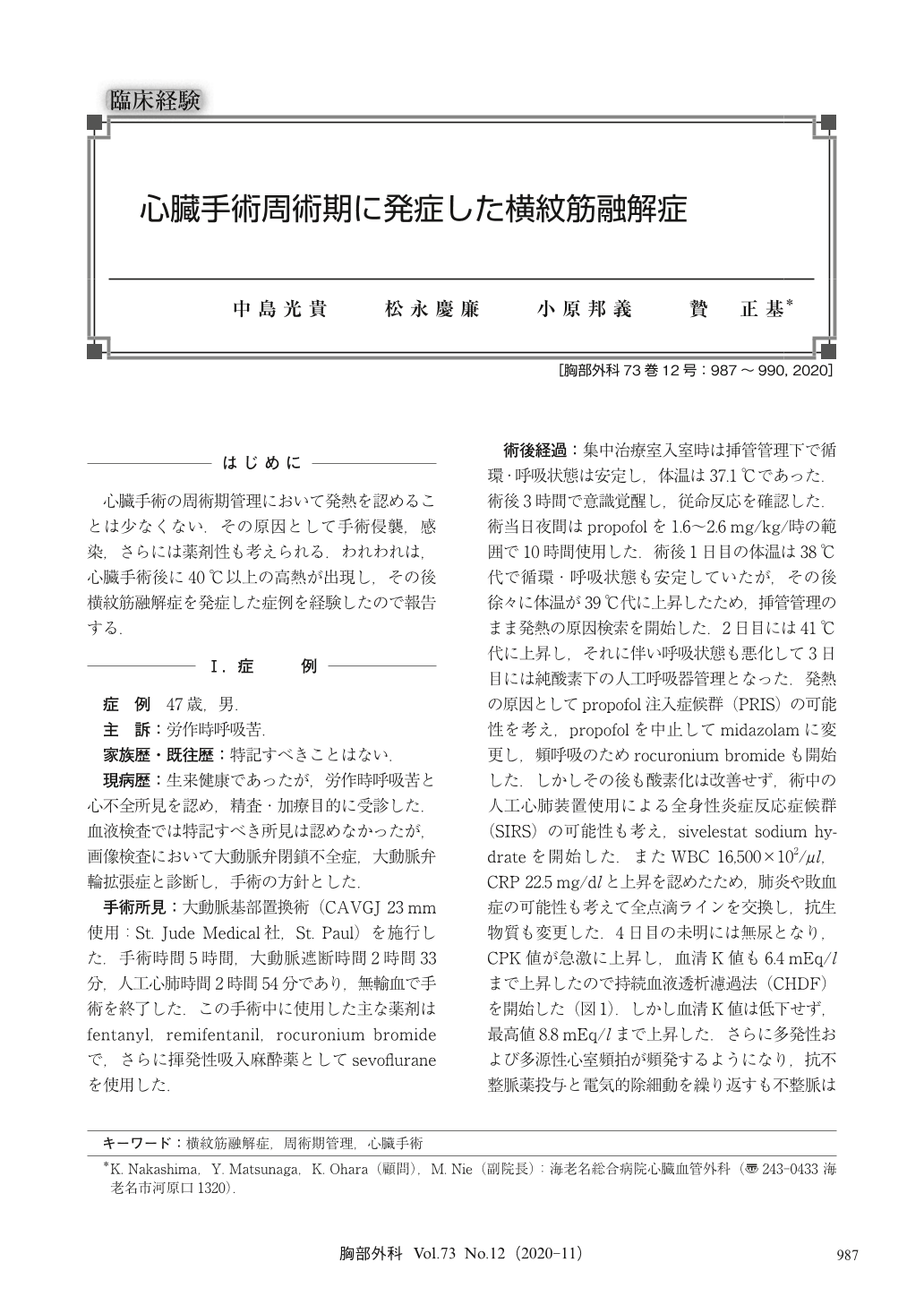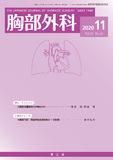Japanese
English
- 有料閲覧
- Abstract 文献概要
- 1ページ目 Look Inside
- 参考文献 Reference
心臓手術の周術期管理において発熱を認めることは少なくない.その原因として手術侵襲,感染,さらには薬剤性も考えられる.われわれは,心臓手術後に40 ℃以上の高熱が出現し,その後横紋筋融解症を発症した症例を経験したので報告する.
We report a case of rhabdomyolysis during a perioperative period after cardiac surgery. A 47-year-old man underwent aortic root replacement for annuloaortic ectasia under general anesthesia using sevoflurane, fentanyl, remifentanil, rocronium bromide and midazolam. On the 1st postoperative day (1 POD), his body temperature rose over 38 ℃, which continued for 3 days despite our attempt to stabilize the fever. On 4 POD, his laboratory data and hemodynamics dramatically worsened, and we commenced continuous hemodialysis filtration (CHDF) and percutaneous cardiopulmonary support system (PCPS). In addition, balloon pumping (IABP) was started on 5 POD. At the same time, we initiated dantrolene sodium hydrate infusion according to a clinical grading scale to predict malignant hyperthermia (MH) susceptibility. Serum creatine phosphokinase (CPK) increased over 350,000 U/l on the 7 POD, and dantrolene sodium hydrate was continuously infused until 9 POD. Despite dantrolene sodium infusion, CHDF, IABP and PCPS, his condition did not improve, and he died of disseminated intravascular coagulation syndrome (DIC) and sepsis on 28 POD. Computed tomography on 21 POD disclosed scattered low-density areas in the erector spinal, lliopsoas and femoral muscles, which indicated rhabdomyolysis. Histopathological examination using hematoxylin and eosin stain revealed destroyed striated-muscle fibers and swelling rhabdomyocytes. It remained unclear which drug triggered rhabdomyolysis. When MH is suspected, we should consider the use of the clinical grading scale to predict its susceptibility and start dantrolene sodium hydrate infusion.

© Nankodo Co., Ltd., 2020


